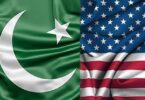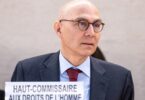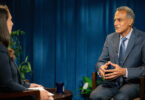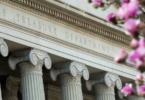F.P. Report
WASHINGTON: Good morning. It is a pleasure to join today’s meeting, I appreciate the invitation from the Financial Literacy and Education Commission (FLEC) to speak to this important intergovernmental body on these critical issues.
I especially appreciate that I am able to participate virtually this morning. The FLEC’s efforts to coordinate and elevate the agencies work to advance financial education is critical in furthering progress toward the goal of broad-based financial literacy.
Providing consumers with the necessary tools and information to help them make sound financial decisions enhances economic well-being for everyone. The Federal Reserve ensures that our work contributes to this overarching goal—bringing together the efforts of the Board of Governors and the Reserve Banks to enhance the relationship between economic well-being, financial education and access to the financial system.
Access to financial education provides the foundation for the success of this work and helps to further the Fed’s broader goal of promoting a healthy economy.
Consumers make better informed decisions when they understand the consequences of their financial decisions. Better decisions lead to more opportunity to build financial capacity that establishes credit, leading to savings and other wealth-building activities.
Financial education provides consumers with critical skills that enable them to evaluate options and make sound decisions. In today’s challenging economic environment, the Federal Reserve is helping to build a broad understanding of fundamental economic principles. We have undertaken a variety of efforts to strengthen resources for teachers and communities including our federalreserveeducation.org website which provides teachers with online resources about personal finance and economics, for all students from kindergarten to college. Other programs, like the Philadelphia Fed’s Keys to Financial Success curriculum and the St. Louis Fed’s economic education guides and videos, support students through knowledge and skills development to understand how economics impacts their day-to-day lives.1
We all know that the financial services marketplace is vast and that it evolves very quickly, offering consumers a wide and growing range of choices among financial products and providers. As a result, it is important that small businesses and consumers are prepared with information and resources to guide their personal financial decisions. The benefits are potentially limitless when consumers understand how their financial choices affect their current and future financial security.
In addition to broad-based outreach, I would also like to emphasize the opportunity that financial education provides to advance our shared goal of financial inclusion. Today, I will discuss three important aspects of the Fed’s inclusion efforts that helps to inform policies and practices designed to advance financial access and capability: Access to a banking account; the availability of responsible small-dollar lending products for short term financial needs; and expanded reach of financial initiatives to Indigenous and native communities to more effectively assist in providing access to the broader financial economy.
We have made significant progress in providing greater access to bring the unbanked into the insured depository space. Our research gives us insight into the success of recent efforts to expand access among unbanked populations. For example, the Federal Reserve’s Survey of Household Economics and Decisionmaking (SHED) showed in 2021 that 94 percent of adult survey respondents have a bank or credit union account, and the Federal Deposit Insurance Corporation’s 2021 National Survey of Unbanked and Underbanked Households found that 95.5 percent of all U.S. households were banked, which is the highest level since the survey began in 2009. 2
The Fed’s SHED survey shows similar results. From 1989 to 2019, the percentage of U.S. adults with bank accounts rose from 85.6 to 94.5 percent. This is also true in the increased number of bank accounts owned by members of minority groups over the same time period, especially for Black and Hispanic consumers. Black adults increased bank account ownership from 56.7 to 86.8 percent and Hispanics increased from 63.5 to 89.5 percent.
Though these surveys show significant improvement over the past decades, there is still further progress to make. In fact, our SHED survey data helps to identify characteristics of those who may choose not to use a deposit account or do not have access to one. The most recent survey results show that income and education may also play a factor—among the respondents, 24 percent of adults who have not earned a high school diploma and 17 percent of adults making less than $25,000 a year did not own a deposit account.
We also know that there are many factors that may lead consumers to choose not to engage in the banking system, whether from a distrust of the banking system or prior mishandling of a banking relationship being an impediment to account ownership.
These broader gains in the number of consumers with bank accounts are an important measure of our collective success, particularly in an environment where consumers can access an ever-growing range of financial services. While there are a multitude of nonbank products and providers, none provide the reliability and protection of FDIC insurance for deposits. Bank accounts continue to be the safest and most reliable way to deposit and keep money and engage in a variety of transactions. These affordable, government insured banking relationships can help consumers and businesses manage their money—to save or spend as desired—and develop financial management skills through savings and payments. In addition, having a banking relationship may assist consumers borrowing money to invest in education, a home, vehicle or a business.
The Federal Reserve continues to support expanding access to bank accounts through the Bank On program, which provides those without a banking relationship access to low- or no-cost deposit accounts. The St. Louis Fed’s Bank On Data Hub reports national data for all banks that offer these Bank On program accounts. In 2022, more than 200 banks offered certified Bank On accounts. These accounts are now available at more than 46,000 U.S. bank and credit union branches.
Like affordable banking services, responsible small-dollar lending products can play an important role in financial inclusion by helping meet immediate credit needs from emergency or unexpected expenses, temporary cash flow disruptions, or unplanned income shortfalls. Small-dollar loans are often a critical source of funding when economic stress occurs. During the COVID-19 pandemic, the Federal Reserve and other agencies issued updated principles for banks to consider when offering responsible small-dollar loans. Successful programs incorporate repayment safeguards and seek to provide outcomes that enhance borrowers’ financial capabilities. As loan markets continue to evolve, well-designed small-dollar loan products remain an important resource for consumers, helping to encourage positive credit practices and transition into additional financial products.
I will conclude with a key element of the Federal Reserve’s community engagement to broaden access to financial services so that more Americans can participate in the broader economy. Financial inclusion for all, including underserved communities, like Indigenous groups, is important for the economic strength of our country. Our efforts across multiple Federal Reserve System functions work to advance this goal. The Federal Reserve Board’s Community Advisory Council offers diverse perspectives on economic circumstances and financial services needs of a range of consumers and communities, with a particular focus on low- and moderate-income populations. The Community Advisory Council has benefited from having representation from the Native American Indian community serving on the council and updating the members on current challenges and opportunities facing these communities. In addition, in 2021, the Federal Reserve joined the Central Bank Network for Indigenous Inclusion, which fosters ongoing dialogue and research to enhance the participation of Indigenous populations in the economy.
Our efforts in this area emphasize the importance of education. In fact, the St. Louis Fed’s Native Economic and Financial Education Empowerment program has provided economic and personal finance education for Native communities and organizations throughout the country since 2018.3
Recent research shows promising trends in access to bank accounts for Native American Alaskan and Indian communities, with over 93 percent of these households now holding a bank account, which is nearly a 10-percentage point increase from 2019. I am very pleased to see that these efforts and our commitment to bringing access to financial services to Indigenous communities have been beneficial.
Thank you for the invitation to speak to you today. I appreciate the opportunity to highlight the Federal Reserve’s contributions to FLEC’s mission of financial empowerment and I look forward to the insights from today’s meeting.






